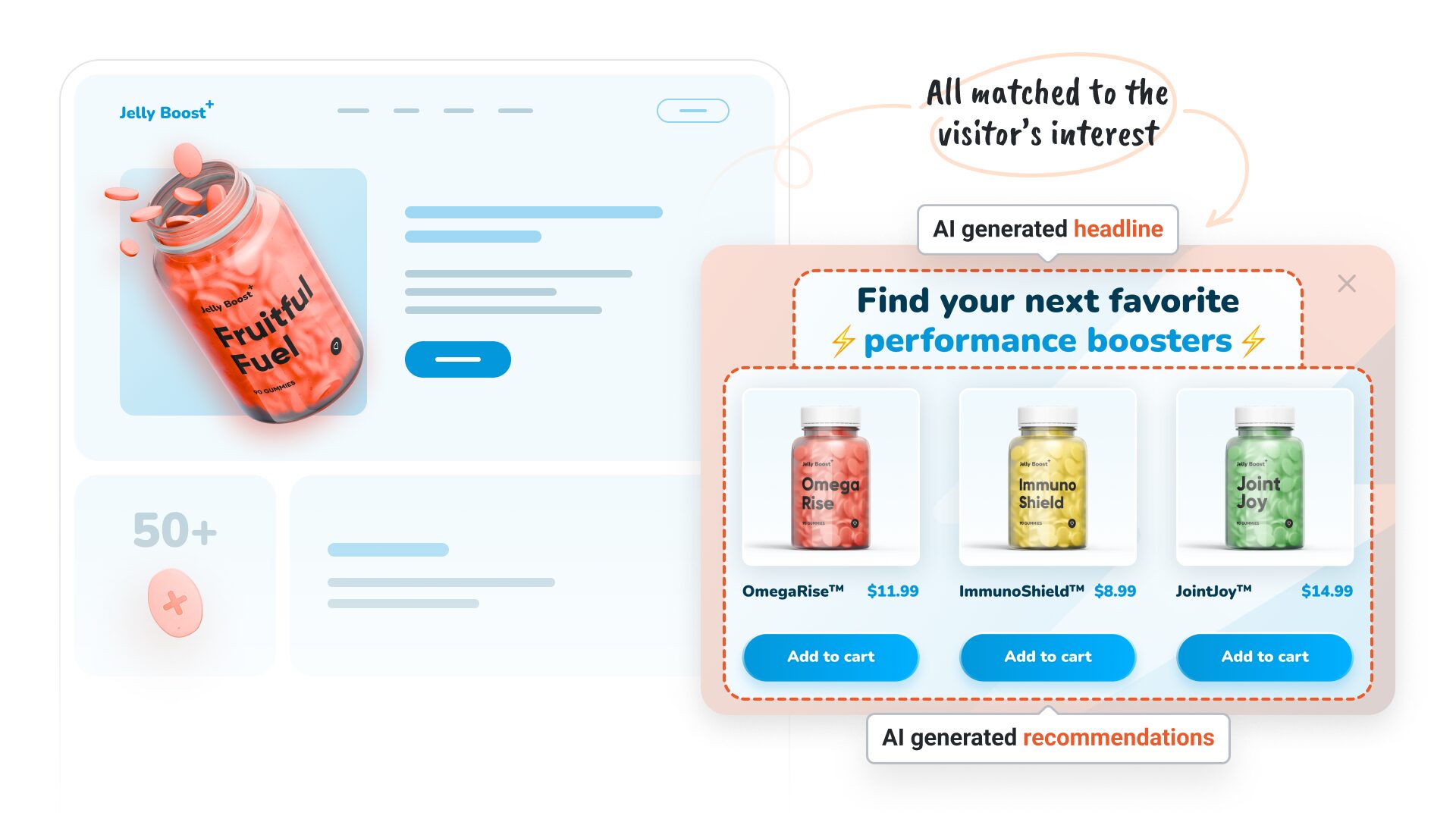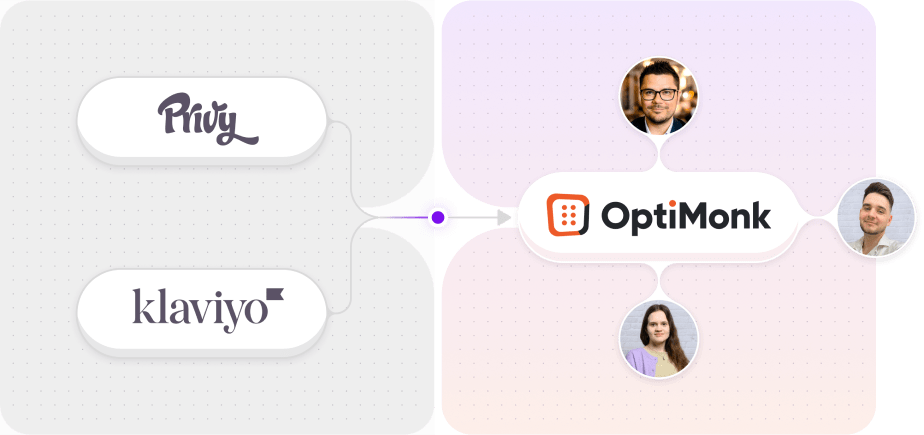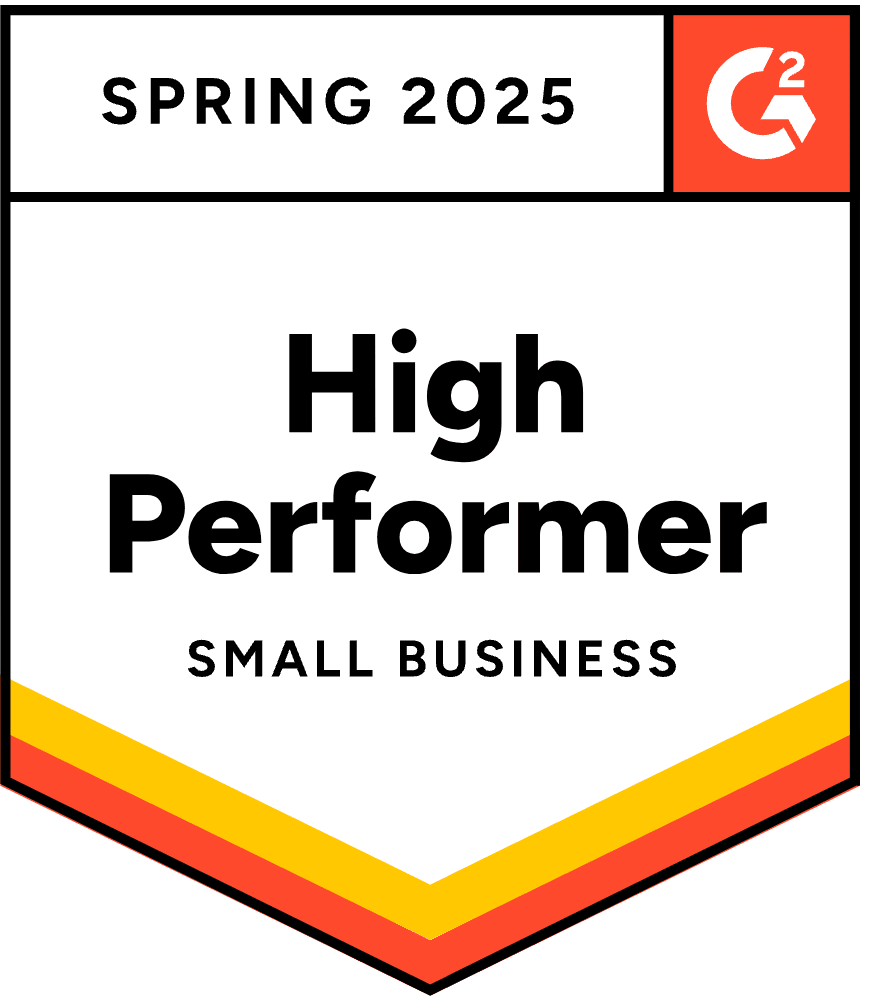- Blog
- Product Page Optimization FAQ: Everything You Need to Know About Product Page Optimization
Product Page Optimization FAQ: Everything You Need to Know About Product Page Optimization
Table of Contents
What is product page optimization?
Product page optimization refers to improving the elements of a product page to increase its ability to convert visitors into customers.
This involves enhancing the user experience (UX), SEO, and design aspects—for example, ensuring product descriptions are compelling, images are clear, and the page loads quickly.
How to optimize product pages?
Optimizing product pages involves a combination of design, content, and technical changes.
You should focus on making the page user-friendly by:
- improving the layout,
- adding high-quality images,
- using benefit-driven headlines,
- crafting clear, benefit-oriented product descriptions,
- including plenty of social proof, and
- using SEO techniques like relevant keywords and structured data.
What does page optimization mean?
Page optimization involves improving every aspect of a webpage, from technical features like page speed to content elements such as images and copy.
The goal is to create a seamless and engaging experience that leads to more conversions.
This includes fast loading times, a clear layout, optimized content, and personalization options.
What is product page SEO?
Product page SEO is the process of optimizing a product page to rank higher in search engine results. This involves using targeted keywords in titles, descriptions, image alt text, and URLs.
It also includes adding structured data (Schema Markup), improving page load speed, and making the page mobile-friendly to boost its chances of ranking and being found by potential customers.
What is an example of product optimization?
SolaGarden, an ecommerce store selling premium solar garden lights, took a large-scale approach to improving their product pages.
They introduced a series of updates to make their product pages more engaging and conversion-focused.
Every product received a one-sentence slogan and a short summary highlighting its main benefits at the top of the page. They also added a concise, benefit-driven description and a positive customer testimonial to build trust.

These changes led to measurable results: SolaGarden saw a 5.3% increase in orders and a 10.9% uplift in overall revenue.
You can read more about their success story.
What are the 5 steps of optimization?
Optimization typically unfolds in five moves:
Step 1: Audit the current page
Start by reviewing your existing product page, check the copy, images, layout, and mobile experience. Identify any technical issues such as broken links, slow loading times, or missing alt tags.
Step 2: Apply SEO best practices
Optimize titles, meta descriptions, headings, URLs, and image alt texts with relevant keywords. Add structured data (Product, Reviews, Price) so search engines can better understand and display your page in search results.
Step 3: Improve the design and UX
Make the page clean and easy to scan. Ensure the call-to-action (CTA) stands out, key details like price, size, and shipping are easy to find, and that the page performs smoothly on mobile devices.
Step 4: Optimize for conversion
Refine the elements that directly influence purchase decisions. Focus on benefit-driven product descriptions, strong social proof (reviews and ratings), trust signals (guarantees, return policies, secure checkout), and helpful supporting content such as FAQs.
Step 5: Test and iterate
Run A/B tests on headlines, images, CTAs, layouts, and messaging. Analyze the results to identify what performs best, then continuously refine and update your product pages. Optimization should be an ongoing process, not a one-time task.
How to optimize a product page on Shopify?
To optimize a product page on Shopify, begin by improving product descriptions with relevant keywords and ensuring that images are high-quality and properly optimized.
Make sure your layout is clean, intuitive, and mobile-friendly, and that your page loads quickly.
You can also explore Shopify’s built-in tools and apps to improve SEO, add customer reviews, or recommend related products to increase engagement and conversions.
How to make a good product page on Shopify?
Shopify offers built-in tools and apps that help you build high-converting product pages with ease. Using the theme editor, you can add elements like:
- A strong slogan
- A benefit-focused subheadline
- High-quality images
- A concise, persuasive product description
- A clear call-to-action
These components work together to create a product page that drives engagement and conversions.
Here’s an example from Obvi, whose product page perfectly demonstrates how these elements come together to create a seamless and conversion-focused shopping experience.

In short, a good Shopify product page combines a clean design, benefit-focused descriptions, fast performance, and smart conversion tools to guide visitors toward completing a purchase.
How to optimize page speed in Shopify?
You can improve page speed on Shopify by compressing images, minimizing the use of heavy apps or unnecessary scripts, enabling lazy loading for images, and taking advantage of Shopify’s built-in content delivery network (CDN).
It’s also important to regularly test your store’s performance using tools like Google PageSpeed Insights or Shopify’s built-in speed report to identify and fix potential slowdowns.
How does the placement and design of the call-to-action (CTA) button affect conversion rates?
The CTA button’s placement and design are critical for conversions. It should be easy to find, placed where users expect it (e.g., near the product image or description), and designed with a contrasting color.
Action-oriented language like “Add to Cart” or “Buy Now” makes it more compelling.
What are the best practices for leveraging social proof on a product page?
To leverage social proof effectively, prominently display customer reviews, ratings, and testimonials on the product page.
User-generated content (UGC), like photos or videos from customers using the product, can also help build trust.
How should a product page be structured to build customer trust and overcome buying friction?
A product page should feature clear, high-quality images of the product from multiple angles.
It should include trust signals such as secure payment icons, a transparent return policy, and customer reviews.
Gymshark is a great example of an effective product page.
They display their products from multiple angles (notice the scroll button beside the image), use clear, high-quality photos, and include all the essential details a shopper might need to make a confident purchase.

The layout must be easy to navigate, with a well-defined and visible call-to-action that guides users smoothly toward completing their purchase.
What is the ideal amount and type of product imagery and video needed to maximize conversions?
The ideal setup includes 3–5 high-quality images showing the product from different angles, along with close-ups and lifestyle shots that demonstrate it in real use.
Adding a short product demo or usage video can further increase trust and help customers better understand the product’s value, ultimately leading to higher conversions.
How can A/B testing be effectively used to determine the best product page elements?
A/B testing helps you identify which elements of your product page perform best by comparing different versions.
You can test variations in CTA button text and placement, try different product image styles or add videos, and experiment with layout or copy changes to see which combination results in higher engagement and conversions.
With tools like the Smart Product Page Optimizer, AI can automatically test and refine these variations for you, tracking how each version impacts conversions and sales while continuously optimizing your product pages in the background.
Which ecommerce metrics (besides conversion rate) are essential for measuring product page success?
In addition to conversion rate, important metrics include:
- Bounce rate: which measures how engaging the page is.
- Average time on page: which shows how long visitors stay on the page.
- Exit rate: which indicates how many visitors leave without converting.
- Revenue per visitor (RPV): which reflects the financial success of the page.
How do you best handle and display product variations (size, color, material) to minimize user confusion?
Use clear and intuitive selection options like dropdown menus or clickable swatches.
Display images that automatically update based on the chosen variation, and make sure pricing and availability are always visible and accurate for each option.
This helps customers make quick, confident choices without second-guessing.
What are effective techniques for creating a sense of urgency or scarcity on a product page?
You can build urgency by adding countdown timers for limited-time offers, displaying messages like “Only 3 left in stock,” or featuring banners that promote flash sales and time-sensitive deals.
What makes a product description effective?
Product descriptions should focus on the benefits the customer will experience.
For example, instead of saying, “Made with high-quality leather,” say, “This durable leather bag keeps your essentials protected and stylish.”
Use language that resonates emotionally with the customer and addresses their needs.
How important is structured data (Schema Markup) for a product page, and which types should be implemented?
Structured data is crucial for improving search visibility and appearing in rich snippets. For product pages, use:
- Product schema to display price, availability, and reviews.
- Review schema to highlight customer ratings directly in search results.
- Breadcrumb schema for better navigation.
What is keyword cannibalization, and how can it be avoided when optimizing multiple product pages?
Keyword cannibalization occurs when multiple pages target the same keyword, leading them to compete with each other.
To avoid this, ensure each product page targets unique, long-tail keywords. Use canonical tags to indicate the preferred page when content overlaps.
How does page speed directly correlate with conversion rate and search engine rankings for a product page?
A faster page improves the user experience, reducing bounce rates and increasing the likelihood of conversion.
It also plays a critical role in SEO, as search engines like Google use page speed as a ranking factor. Slow pages can lead to lower rankings and fewer conversions.
What are the best strategies for optimizing product images for both speed and SEO?
Use compressed image formats like JPEG or WebP to speed up page load times. Alt text should include relevant keywords for SEO purposes.
Keep images at an appropriate size for web use large enough to look good but small enough to load quickly.
How can product pages be optimized to appear in Google's Rich Snippets and “People Also Ask” sections?
To appear in Google’s Rich Snippets and “People Also Ask” sections, implement structured data for Product schema and FAQ schema.
Ensure your content is clear, concise, and answers common user queries in a conversational tone.
How do you prevent duplicate content issues when multiple product pages share very similar descriptions (e.g., product bundles)?
To prevent duplicate content:
- Use canonical tags to point to the main page.
- Slightly modify descriptions for each product, focusing on different benefits.
- Add unique content like customer reviews to differentiate the pages.
How can personalization be used to improve the product page experience?
Personalization can greatly enhance a product page by showing visitors recommendations that truly match their interests.
Tools like the Smart Recommender use AI to tailor every element of your popup based on user behavior and preferences.
This includes an AI-driven product recommendation engine, a dynamically generated headline that adapts to visitor context, and a personalized subheadline designed to maximize engagement and relevance.

What are the different types of cross-selling and upselling tactics that can be employed on a product page?
Upselling involves encouraging customers to choose a higher-value version of a product such as a premium or deluxe model, by emphasizing its added benefits or superior features.
Cross-selling, on the other hand, focuses on recommending complementary products that enhance the main purchase, like suggesting a matching accessory or add-on.
Both strategies work best when they’re seamlessly integrated into the shopping experience.
You can display relevant suggestions directly on the product page, in the cart, or just before checkout to increase average order value without disrupting the user journey.
How should product page content be adapted for visitors arriving from different traffic sources (e.g., paid ads vs. organic search)?
Personalization plays a key role in converting visitors from various sources. For paid traffic, prioritize clear calls-to-action and limited-time offers to encourage quick decisions.
For organic visitors, focus on building trust with detailed, SEO-optimized descriptions, genuine customer reviews, and strong value propositions that highlight why your product stands out.
What is the process for optimizing a product page for a Voice Search query?
To optimize for voice search, focus on conversational keywords and phrases. Product descriptions should directly answer common customer questions in a natural tone.
Using structured data helps increase visibility in voice search results, especially in product-related queries.
Migration has never been easier
We made switching a no-brainer with our free, white-glove onboarding service so you can get started in the blink of an eye.

What should you do next?
Thanks for reading till the end. Here are 4 ways we can help you grow your business:
Boost conversions with proven use cases
Explore our Use Case Library, filled with actionable personalization examples and step-by-step guides to unlock your website's full potential. Check out Use Case Library
Create a free OptiMonk account
Create a free OptiMonk account and easily get started with popups and conversion rate optimization. Get OptiMonk free
Get advice from a CRO expert
Schedule a personalized discovery call with one of our experts to explore how OptiMonk can help you grow your business. Book a demo
Join our weekly newsletter
Real CRO insights & marketing tips. No fluff. Straight to your inbox. Subscribe now
Barbara Bartucz
- Posted in
- Conversion
Partner with us
- © OptiMonk. All rights reserved!
- Terms of Use
- Privacy Policy
- Cookie Policy













